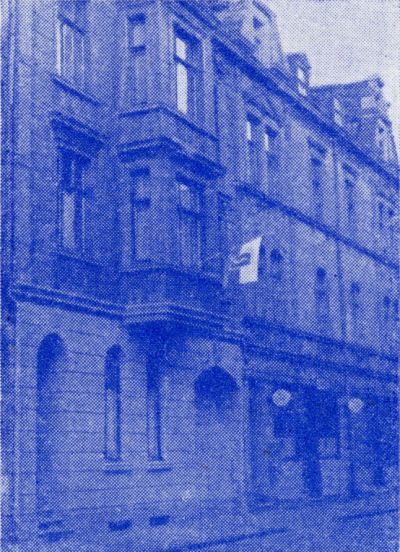The Slavic Bank

The bank was set up on 8th February 1933 by a credit cooperative which was organised in the “Union of Polish Cooperatives in Germany” (Związek Spółdzielni Polskich w Niemczech). Start capital amounted to 150,000 RM, and was raised to 500,000 RM in 1937. The patron of the bank was Pastor Bolesław Domański. The bank conducted the usual business associated with a credit institute: giving credit and handling financial transactions. 90% of the credit was given to cooperative banks and agrarian trading companies, which borrowed money to be able to purchase artificial fertilisers and seeds. The Bank also financed many different activities undertaken by Polish organisations in Germany. It possessed a variety of real estate, including the student boarding school building in Breslau (Wrocław), a house in Opole on Nikolaistraße, a house and a piece of land in the village of St. Anne’s Mountain (Góra św. Anny), building land for the girls’ grammar school in Racibórz, and the Polish grammar school building in Marienwerder (Kwidzyń). In February 1940 the Nazi regime dissolved the Slavic Bank and confiscated its assets. After the Second World War the “Union of Poles in Germany” succeeded in recovering only a part of the assets. Even today some Poles in Germany are demanding that an enquiry be opened once more to fix an appropriate level of compensation.
The history of Polish banks in Germany goes back as far as the turn of the 20th century. The first financial institutes were set up in Silesia and Eastern Prussia. They had a cooperative character and were intended to support Polish agriculture. In addition they were mean to improve communication between Polish farmers and the banking system. Thus Polish banks in Germany fulfilled two closely related functions – business and national – which remained valid over the next few decades.
From the very start the organisation and business activities of Polish banks in Germany was intimately linked with the Poznan Bank, the “Bank Przemysłowców” (Industry Bank) and the “Bank Spółek Zarobkowych”, (Social Acquisition Bank). Above all there were two types of bank which enjoyed great popularity in Germany: the “Bank Ludowy” (People’s Bank) and the “Rolnik” (Farmer). The former was similar to the Industry Bank in Poznan. It was set up in 1861 and their organisations were closely connected. The “Rolnik” was set up in agrarian regions. Its duties included advising farmers on how to purchase cereals and sell produce necessary for agrarian production (artificial fertilisers, seeds, heating material etc.) The first “Rolnik” Bank was set up in 1906 in Złotów. Other branch-specific banks were also set up in Germany. These included construction and consumption cooperatives. That said, they did not survive the First World War.
The end of the First World War marked an important break in the growth of banking cooperatives. In 1918 27 Polish cooperatives had survived in Germany. Reorganisations were necessary as a result of the creation of Poland and drawing new border lines. Poznan no longer played the central role as a headquarters for finance and organisation. Political (the plebiscite and the Silesian uprising), economic (inflation) and personal (the return of Polish bankers to Poland) factors all influenced the development of the cooperatives. In this period we should particularly note the achievements of the “Bank Rabotników” (Workers’ Bank) in Bochum, which was set up in 1917. After all the branches of the Poznan Bank in Westphalia were closed down it took over responsibility for cooperative activities and financial transactions. The bank enjoyed many years of impressive growth in the following years. In 1920 it had access to cash reserves of 115,000 Marks, and had seven branches in the Ruhrgebiet (in Castrop, Wanne, Dortmund, Hamborn-Marxloh, Herne, Horst-Emscher and Recklinghausen). In addition it had a branch in the Netherlands, one in Katowice and one in Toruń. The bank financed Polish cultural activities and the educational system where its credit was used to finance Polish lessons. The swift growth of the Bank slowed down in the mid 1920s due to emigration to Poland and the withdrawal of deposits. Because it had little or no income now the bank reduced its activities from year to year, something which reduced its importance accordingly.



